We are having four main social events: the Congress Dinner, two half-day excursions and a night tour of the city.
COCKTAIL
- Tosta de pastel de cabracho con ali-oli de rúcula
- Tosta de crema de queso, cebolla caramelizada y setas al ajillo
- Croquetas de jamón ibérico
- Bebidas (Tinto joven, Blanco de Rueda, cerveza, refrescos)
|
RECEPTION
- Scorpionfish pie toast with rocket and garlic mayonnaise (ali-oli)
- Cheese spread toast with caramelized onions and mushrooms in garlic sauce
- Iberian ham (jamón ibérico) croquettes
- Assorted drinks
|
ENTRANTES (a compartir)
- Jamón Ibérico de Bellota / Queso añejo de oveja de Sardón
- Ensalada templada con queso de cabra, frutos rojos y vinagreta de Módena
- Timbal de huevos rotos con pimientos y ralladura de trufa
|
STARTERS (to share)
- Fine Iberian ham (jamón ibérico) / Mature sheep cheese
- Warm salad with goat cheese, red berries, and Modena vinegar dressing
- Timbale of scrambled eggs with peppers and truffle shavings
|
PLATO PRINCIPAL (a elegir)
- Entrecotte de buey
- Carrillera de ternera estofada al vino tinto
- Bacalao al pil-pil de boletus con verduritas
- Salmón asado con tomate provenzal
|
MAIN COURSE (choice of one of the following)
- Beef entrecote
- Beef cheek stew in red wine sauce
- Cod in boletus pil-pil sauce with vegetables
- Roasted salmon with Provencal tomato
|
| POSTRES
|
DESSERTS
|
BEBIDAS
- Vino tinto de la Ribera del Duero “Prado Rey Roble”
- Agua mineral
- Café
- Licores de la casa
|
DRINKS
- Red Ribera wine “Prado Rey Roble”
- Mineral water
- Coffee
- Liquors
|
We are visiting two villages near Valladolid, Peñafiel (Tuesday 19th, when we’ll visit the castle and the wine museum) and Urueña (Thursday 21st, when we’ll visit the book museum e-LEA and will have a guided tour of the town).
Note: If accompanying persons want to join us ONLY for the outings, they do not need to register -- this can be paid for during the Congress.
- Peñafiel (Tuesday 19th) - 20 € (incl. visit to the castle, the museum and the winery)
- Urueña (Thursday 21st) - 5 € (incl. guided tour and visit to museum).
Peñafiel
 Though the first settlers in Peñafiel probably belonged to prehistoric cultures, it will be during the Spanish Reconquest period that the town flourished as one of the main bastions against the Arabs. In the thirteenth century the important writer (El Conde Lucanor) and politician Don Juan Manuel, nephew of King Alfonso X, would choose Peñafiel as his preferred dwelling house. But its connection with art had started a couple of centuries before, when several important civil and religious buildings were built, including more than a dozen churches and convents.
Though the first settlers in Peñafiel probably belonged to prehistoric cultures, it will be during the Spanish Reconquest period that the town flourished as one of the main bastions against the Arabs. In the thirteenth century the important writer (El Conde Lucanor) and politician Don Juan Manuel, nephew of King Alfonso X, would choose Peñafiel as his preferred dwelling house. But its connection with art had started a couple of centuries before, when several important civil and religious buildings were built, including more than a dozen churches and convents.
One of the landmarks of Peñafiel is its castle, which was a key defensive location along river Duero, both for Christians and Muslims in the 9th and 10th centuries. The castle is notorious for its narrowness. Even though small, in this castle there was a fierce battle in which thousands of people died. Its shape resembles a ship because the mountain on which it was built is very narrow. All the walls are very thick and tall. This castle was designed to be "unconquerable" and, according to many historians the gatehouse is probably the best one in Spain.
 This castle is now the Provincial Wine Museum. The reason for this is that the town is at the heart of the Wine Region of the Ribera del Duero, and wine has been an essential part of Peñafiel’s culture since time immemorial. In these lands, it’s virtually impossible to stumble upon someone who doesn’t know about vines, vineyards, wine processes, wineries, wine cellars and wine, as expected of the largest population centre in Valladolid’s Ribera del Duero. Peñafiel offers visitors a wide range of wine-based tourist options.
This castle is now the Provincial Wine Museum. The reason for this is that the town is at the heart of the Wine Region of the Ribera del Duero, and wine has been an essential part of Peñafiel’s culture since time immemorial. In these lands, it’s virtually impossible to stumble upon someone who doesn’t know about vines, vineyards, wine processes, wineries, wine cellars and wine, as expected of the largest population centre in Valladolid’s Ribera del Duero. Peñafiel offers visitors a wide range of wine-based tourist options.
Urueña
 Urueña is a medieval town surrounded by a wall, a castle and beautiful churches like La Asunción and La Anunciada. In Urueña we will find the first "Villa del Libro" (Book Village) in Spain. In the streets of this town you will find 12 bookshops selling old or out-of-print books, or where interesting activities take place:
Urueña is a medieval town surrounded by a wall, a castle and beautiful churches like La Asunción and La Anunciada. In Urueña we will find the first "Villa del Libro" (Book Village) in Spain. In the streets of this town you will find 12 bookshops selling old or out-of-print books, or where interesting activities take place:
El Rincón Escrito, Alejandría Bookshop, "Wine Museum" Cellar Bookshop (specialising in science and fiction literature about wine), Alcuino Caligrafía (organises courses on calligraphy of other cultures, for all levels), El 7 Bookshop (specialising in the world of bullfighting), Samuel Bookshop, Alvacal, Boutique del Cuento, Almadí Bookshop, La Punta del Iceberg, Alcaraván Bookshop and the Artisan Book Binding Workshop of Urueña.
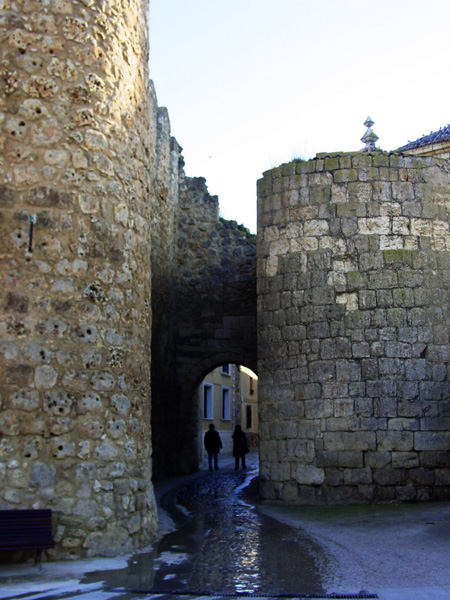 Another interesting place to visit is its original e-LEA Centre (a space for reading, writing and their applications). A 1,200 square-metre space with a specialised library, workshops, a garden, an exhibition hall, an assembly room… And you cannot miss the permanent exhibition "Between the lines. A history of books".
[http://www.diputaciondevalladolid.es/villadellibro/presentacion.shtml]
Another interesting place to visit is its original e-LEA Centre (a space for reading, writing and their applications). A 1,200 square-metre space with a specialised library, workshops, a garden, an exhibition hall, an assembly room… And you cannot miss the permanent exhibition "Between the lines. A history of books".
[http://www.diputaciondevalladolid.es/villadellibro/presentacion.shtml]
On many occasions, this special village presents books, holds public readings,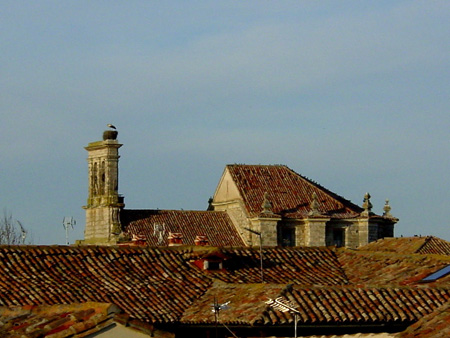 and organises calligraphy, illustration and book binding courses. And on special dates such as the World Book Day (23 April) or on the village's anniversary in March, this place holds a real celebration with conferences, round tables, storytelling, origami workshops, extraordinary concerts, dinners... It is a funny way to enjoy reading, a great opportunity to find a copy of that book you have always looked for, or for having a good day out.
and organises calligraphy, illustration and book binding courses. And on special dates such as the World Book Day (23 April) or on the village's anniversary in March, this place holds a real celebration with conferences, round tables, storytelling, origami workshops, extraordinary concerts, dinners... It is a funny way to enjoy reading, a great opportunity to find a copy of that book you have always looked for, or for having a good day out.
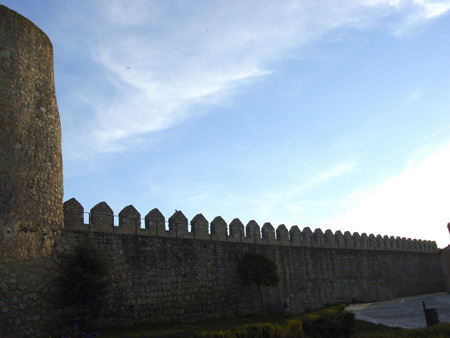 Urueña is also the seat of the Fundación Joaquín Díaz, a cultural foundation whose purpose is to contribute to acknowledge the value of the traditional cultural heritage. The folklorist Joaquín Díaz started to put together these collections which include a wide range of prints, "pliegos de cordel", recordings, illustrations, photographs and instruments. They are currently displayed in an eighteenth-century mansion in Urueña, the Ethnographic Museum. The Fundación holds now specialized collections, the Museum of Musical Instruments, the Bells Museum and the Gramophone Museum
[http://www.funjdiaz.net/english.cfm]
Urueña is also the seat of the Fundación Joaquín Díaz, a cultural foundation whose purpose is to contribute to acknowledge the value of the traditional cultural heritage. The folklorist Joaquín Díaz started to put together these collections which include a wide range of prints, "pliegos de cordel", recordings, illustrations, photographs and instruments. They are currently displayed in an eighteenth-century mansion in Urueña, the Ethnographic Museum. The Fundación holds now specialized collections, the Museum of Musical Instruments, the Bells Museum and the Gramophone Museum
[http://www.funjdiaz.net/english.cfm]
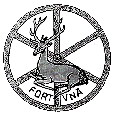

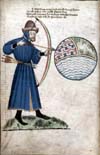
 Though the first settlers in Peñafiel probably belonged to prehistoric cultures, it will be during the Spanish Reconquest period that the town flourished as one of the main bastions against the Arabs. In the thirteenth century the important writer (El Conde Lucanor) and politician Don Juan Manuel, nephew of King Alfonso X, would choose Peñafiel as his preferred dwelling house. But its connection with art had started a couple of centuries before, when several important civil and religious buildings were built, including more than a dozen churches and convents.
Though the first settlers in Peñafiel probably belonged to prehistoric cultures, it will be during the Spanish Reconquest period that the town flourished as one of the main bastions against the Arabs. In the thirteenth century the important writer (El Conde Lucanor) and politician Don Juan Manuel, nephew of King Alfonso X, would choose Peñafiel as his preferred dwelling house. But its connection with art had started a couple of centuries before, when several important civil and religious buildings were built, including more than a dozen churches and convents.
 This castle is now the Provincial Wine Museum. The reason for this is that the town is at the heart of the Wine Region of the Ribera del Duero, and wine has been an essential part of Peñafiel’s culture since time immemorial. In these lands, it’s virtually impossible to stumble upon someone who doesn’t know about vines, vineyards, wine processes, wineries, wine cellars and wine, as expected of the largest population centre in Valladolid’s Ribera del Duero. Peñafiel offers visitors a wide range of wine-based tourist options.
This castle is now the Provincial Wine Museum. The reason for this is that the town is at the heart of the Wine Region of the Ribera del Duero, and wine has been an essential part of Peñafiel’s culture since time immemorial. In these lands, it’s virtually impossible to stumble upon someone who doesn’t know about vines, vineyards, wine processes, wineries, wine cellars and wine, as expected of the largest population centre in Valladolid’s Ribera del Duero. Peñafiel offers visitors a wide range of wine-based tourist options. Urueña is a medieval town surrounded by a wall, a castle and beautiful churches like La Asunción and La Anunciada. In Urueña we will find the first "Villa del Libro" (Book Village) in Spain. In the streets of this town you will find 12 bookshops selling old or out-of-print books, or where interesting activities take place:
Urueña is a medieval town surrounded by a wall, a castle and beautiful churches like La Asunción and La Anunciada. In Urueña we will find the first "Villa del Libro" (Book Village) in Spain. In the streets of this town you will find 12 bookshops selling old or out-of-print books, or where interesting activities take place:  Another interesting place to visit is its original e-LEA Centre (a space for reading, writing and their applications). A 1,200 square-metre space with a specialised library, workshops, a garden, an exhibition hall, an assembly room… And you cannot miss the permanent exhibition "Between the lines. A history of books".
[
Another interesting place to visit is its original e-LEA Centre (a space for reading, writing and their applications). A 1,200 square-metre space with a specialised library, workshops, a garden, an exhibition hall, an assembly room… And you cannot miss the permanent exhibition "Between the lines. A history of books".
[ and organises calligraphy, illustration and book binding courses. And on special dates such as the World Book Day (23 April) or on the village's anniversary in March, this place holds a real celebration with conferences, round tables, storytelling, origami workshops, extraordinary concerts, dinners... It is a funny way to enjoy reading, a great opportunity to find a copy of that book you have always looked for, or for having a good day out.
and organises calligraphy, illustration and book binding courses. And on special dates such as the World Book Day (23 April) or on the village's anniversary in March, this place holds a real celebration with conferences, round tables, storytelling, origami workshops, extraordinary concerts, dinners... It is a funny way to enjoy reading, a great opportunity to find a copy of that book you have always looked for, or for having a good day out. Urueña is also the seat of the Fundación Joaquín Díaz, a cultural foundation whose purpose is to contribute to acknowledge the value of the traditional cultural heritage. The folklorist Joaquín Díaz started to put together these collections which include a wide range of prints, "pliegos de cordel", recordings, illustrations, photographs and instruments. They are currently displayed in an eighteenth-century mansion in Urueña, the Ethnographic Museum. The Fundación holds now specialized collections, the Museum of Musical Instruments, the Bells Museum and the Gramophone Museum
[
Urueña is also the seat of the Fundación Joaquín Díaz, a cultural foundation whose purpose is to contribute to acknowledge the value of the traditional cultural heritage. The folklorist Joaquín Díaz started to put together these collections which include a wide range of prints, "pliegos de cordel", recordings, illustrations, photographs and instruments. They are currently displayed in an eighteenth-century mansion in Urueña, the Ethnographic Museum. The Fundación holds now specialized collections, the Museum of Musical Instruments, the Bells Museum and the Gramophone Museum
[